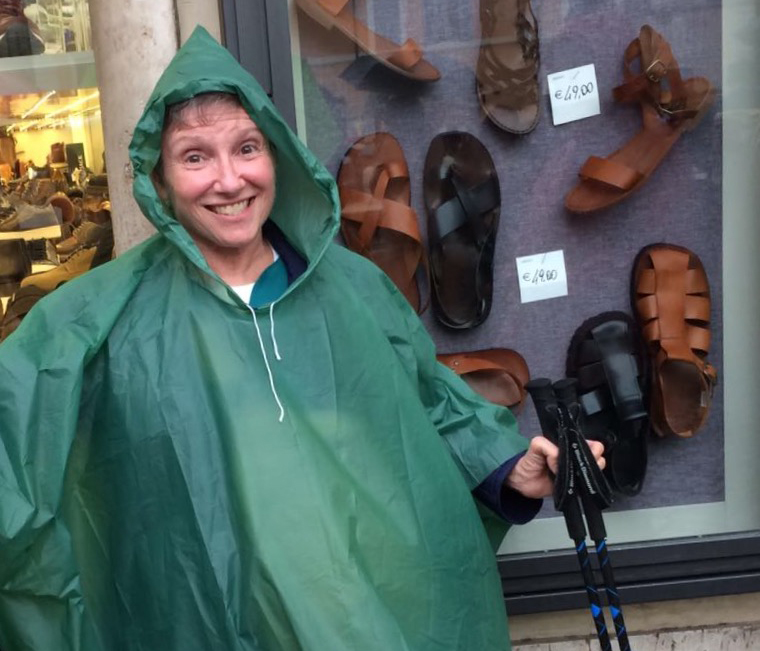Coping and Hoping: CMT Patient Keeps Going

Because Charcot-Marie-Tooth (CMT) disease ran in her family, Denise Snow suspected in high school that frequent falls were more than clumsiness.
“I recognized the disease in myself,” said Snow, 63, after a Charcot-Marie-Tooth Association (CMTA) patient conference in Detroit. “As time went on, symptoms increased. I started noticing trouble with my feet and hands.”
It would be another decade before the official diagnosis: CMT2E, a rare form of CMT2 caused by dominant mutations in the neurofilament light protein gene. And even then, her family didn’t speak much about it. After all, she’d grown up up hearing about CMT.
“I’d hear about it in generalities, what kind of assistive device are you using, that sort of thing,” said Snow, a CMTA branch leader in Seattle. “But in the ’60s and ’70s, we didn’t know as much.”
Even when she was diagnosed in the early 1980s, discovery of the genetic causes of several types of CMT was still a few years away. Meanwhile, the CMTA — long the disorder’s leading patient advocacy organization — had just been founded. And back then, patients could barely imagine treatment advancements on the level of the mouse model of CMT2E recently made at Columbia University.
Since her diagnosis, a few relatives with CMT have died. Two brothers — and all their children — have the disorder, as do three cousins and Snow’s only child. A 15-year-old niece is showing symptoms.
About 15 years ago, one of Snow’s brothers joined a longitudinal study led by prominent neurologist and CMT expert Michael E. Shy of the University of Iowa. Other family members began participating, and six years ago, she did, too. Each year, the family goes to Iowa to see how everyone’s doing.
“We laugh and cry, and help each other out that way,” Snow said.
During their visits, they’re measured on a disease-status scale of 0 to 30, with 30 being the most severe. Last year, Snow rated an 11; her daughter got a 2. Her brothers, who are significantly more affected by CMT, rated in the mid- to high 20s.
Travel requires planning
At home, the Lansing, Michigan, native eschews a neurologist for a primary doctor who’s familiar with her illness. She also regularly sees an osteopath and physical therapist to improve balance and help build core strength. A believer in exercise, she does modified versions of yoga and tai chi, mostly while sitting.
Snow wears an ankle-foot orthotic device for more stability when walking and for help with foot drop — difficulty lifting the foot at the ankle, so that the toes point downward during walking. She uses two walking sticks to help with balance, her main issue.
“I always have to be aware of how and where I’m walking,” said Snow, a teacher and school administrator for 30 years.
If she thinks she’ll have to walk a lot — in airports, for example — Snow will lug along her “lightweight” 25-pound scooter.
“Travel takes a lot of planning and forethought,” she said. “Even going to that conference, I got there early to give myself extra time. I can’t just get on a plane for an event or conference, and turn around and come home, without a lot of fatigue.”
For that condition, common in CMT, Snow uses a prescribed stimulant. She also has medications for hypertension and cholesterol, and for occasional bouts of arthritis, she takes an over-the-counter pain reliever.
“When I was younger I could go, go, go,” said Snow, who still drives and is active in the Girl Scouts. “But I get around pretty well. I’ll do as much as I can while I can.”
Disease with the ‘funny name’
Sometimes, she says, it’s hard to know the difference between the disease and aging.
“I hear friends my age talking about this or that going on, problems with joints, or having hip or knee surgery, and I think at this point in my life, it’s both aging and CMT.”
Similar to CMT1, the disease’s most common subtype, CMT2 is characterized by muscle weakness and atrophy, and changes in sensation, mostly in the body’s periphery. But there’s more variability in CMT2 in onset age and degree of disability.
“It is such a variable disease,” said Snow. “You see people who have some mobility issues, but not as much as others. It’s really hard to compare.”
Although Charcot-Marie-Tooth is the most common inherited disorder involving peripheral nerves, until a decade ago, when she became involved with CMTA, Snow hardly had met anyone with the disease. So when she gets a chance to spread awareness about the disorder with the “funny name,” she’s obliging.
“I carry cards so people can look it up,” she said. “And when I see people look at me and are curious, I give them the elevator version.”
It’s similar to what she does for her local CMTA — offer education and other resources. About 30 group members meet regularly to share information, hear a speaker, or simply support one another through their CMT journey.
“I would’ve liked for a cure or treatments to have happened 10 years ago when I was more mobile,” she said. “But tremendous progress has been made, and I have great hope I will see the day when I see good treatments, if not a cure.”





